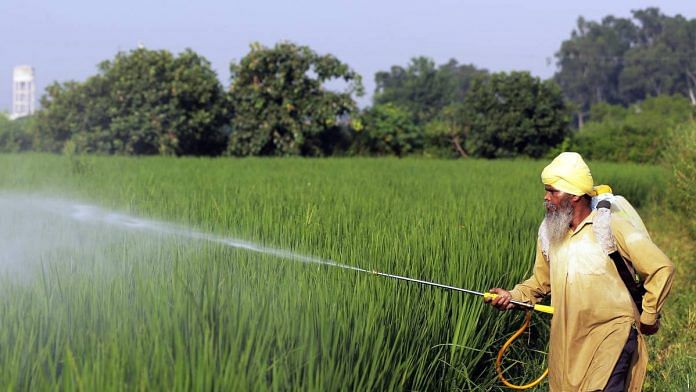
Thank you dear subscribers, we are overwhelmed with your response.
Your Turn is a unique section from ThePrint featuring points of view from its subscribers. If you are a subscriber, have a point of view, please send it to us. If not, do subscribe here: https://theprint.in/subscribe/
A recent assessment from the United Nations Environment and the Climate and Clean Air Coalition found that cutting farming-related methane emissions would be the key in the battle against climate change. New study published in the journal Nature Climate Change, specifically highlights the outsized role methane plays among food-related emissions. Yet, a huge amount of the food we produce is going uneaten – a waste of natural resources, human labour and money. Neither planet nor people are being nourished. The Guardian reported that the EU wastes 153m tonnes of food a year- much more than it imports, but nearly 811 million people go to bed hungry in Afghanistan, Ethiopia, Nigeria, Sudan, Somalia, Syrian, Yemen.
The WFP and the IPCC special report on climate change and land highlights that, from 2010-2016, global food loss and waste equaled 8-10% of global GHG emissions and cost the world about USD 1 trillion per year. Food waste is a global challenge that presents a significant environmental, social, and economic burden to all countries and regions.
Fast climate changes, soil degradation, crisis of irrigation water, food & nutritional security have put many challenges before us to meet increasing nutritious food demand. The weather service had already warned that the effects of extreme weather due to climate change are already being felt on Indian farms. Notably, our breadbaskets, concentrated in only a few states, are at risk. Climate change introduces new risks like rising average temperatures, changing patterns of precipitation, and episodes of climate-related stress such as drought, heat waves, untimely rain and floods that could affect agricultural production and our breadbaskets may become less reliable as these risks become more likely and more severe in the year ahead. Recent past heat waves and untimely rain highlights how reliance on a few big staple crops threatens food security and nutrition. It also highlights the necessitates crop diversification, this offers a unique opportunity to grow highly productive and nutritious crop millet, which is not new to our country having tremendous potential to be grown with less water, thrive in harsh and dry conditions, where other crops cannot grow.
The United Nations General Assembly at its 75th session in March 2021 declared 2023 the International Year of Millets with the Food and Agriculture Organization of the United Nations (FAO) as the lead agency, spoke about the nutritive value of millets and their invaluable role in empowering small farmers, tackling food security issues and achieving sustainable development. Millets can grow in both low and high altitudes and across a wide latitudinal range, on arid lands, under non-irrigated conditions, in very low rainfall regimes, and have a low water footprint. As the globe heats up, glaciers shrink and rainfall patterns change, meaning fresh water becomes scarce. Reducing water consumption is important. Millets require less water than rice and wheat. They are very tolerant of heat, drought and flood and it makes the crop an obvious choice for farmers in an era of climate change. Millets need minimal inputs, they are resistant to diseases and pests and offer a reduced dependence on synthetic fertilisers and pesticides, and therefore can be grown more organically.
Healthy food choices are becoming critical in India, where diabetes is ripping through the population with deadly consequences, there were 69.2 million adults living with diabetes in India in 2015, according to the International Diabetes Federation. In the latest edition of the National Family Health Survey recorded an increase of 4 percentage points in obesity, while the prevalence of anaemia among all groups increased in India. There has been a perceptible increase in heart-related problems.
Health awareness is motivating India’s urban crust to seek out so-called superfoods, such as oats and quinoa, but we are quickly forgetting our own indigenous superfood millets. Traditional staples, like millets, have been replaced by polished rice and refined wheat flour even in rural areas.
According to food writers and nutritionists- each millet has an importance of its own. While some millets, such as finger millet, are full of calcium, some like jowar have potassium and phosphorus, and foxtail is fibrous while qodo is rich in iron. Therefore, it is advisable to keep rotating the kind of millets we are eating. We should also remember that we should not mix millets and should only eat one grain in a meal as each grain has its own requirement as the medium for digestion and mixing them can create imbalances in the body. Millet is fibrous in content, has magnesium, Niacin (Vitamin B3), is gluten-free and has high protein content, which makes them a good choice for those trying to control blood sugar or manage insulin resistance, helps to regulate heart rhythm and reduce certain factors of heart disease.
Central Government has undertaken several initiatives and instituted policy measures to increase the demand of millets, many organizations are coming up in support of this cause and constant media extolling the benefits of everything from millets with the tagline “good for you, good for the planet and good for the smallholder farmer”. In these times of climate change, the government encourages farmers to switch to climate-smart crop millet rather than cultivate the water-intensive rice, and ancient super grains are making a comeback slowly into the fields.
These pieces are being published as they have been received – they have not been edited/fact-checked by ThePrint.

COMMENTS